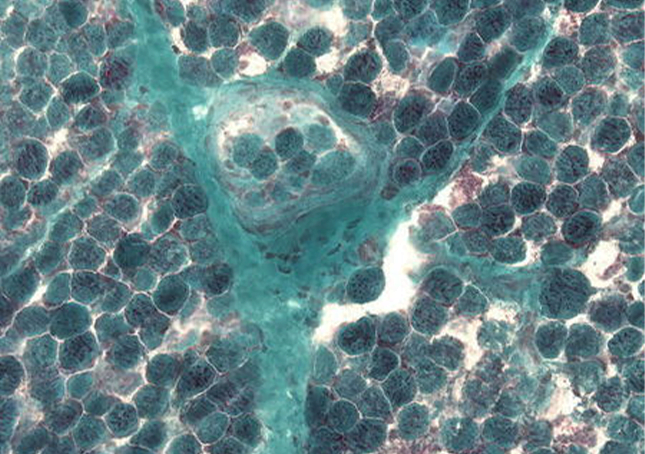Leigh syndrome

Leigh syndrome (also called Leigh disease and subacute necrotizing encephalomyelopathy) is an inherited neurometabolic disorder that affects the central nervous system. It is named after Archibald Denis Leigh, a British neuropsychiatrist who first described the condition in 1951.
Normal levels of thiamine, thiamine monophosphate, and thiamine diphosphate are commonly found but there is a reduced or absent level of thiamine triphosphate. This is thought to be caused by a blockage in the enzyme thiamine-diphosphate kinase, and therefore treatment in some patients would be to take thiamine triphosphate daily.
The symptoms of Leigh syndrome are classically described as beginning in infancy and leading to death within a span of several years;[1] however, as more cases are recognized, it is apparent that symptoms can emerge at any age—including adolescence or adulthood—and patients can survive for many years following diagnosis.[5] Symptoms are often first seen after a triggering event that taxes the body’s energy production, such as an infection or surgery.
The general course of Leigh syndrome is one of episodic developmental regression during times of metabolic stress. Some patients have long periods without disease progression while others develop progressive decline.
Infants with the syndrome have symptoms that include diarrhea, vomiting, and dysphagia (trouble swallowing or sucking), leading to a failure to thrive. Children with early Leigh disease also may appear irritable and cry much more than healthy babies. Seizures are often seen. Excess lactate may be seen in the urine, cerebrospinal fluid, and blood of a person with Leigh syndrome.
As the disease progresses, the muscular system is debilitated throughout the body, as the brain cannot control the contraction of muscles. Hypotonia (low muscle tone and strength), dystonia (involuntary, sustained muscle contraction), and ataxia (lack of control over movement) are often seen in people with Leigh disease. The eyes are particularly affected; the muscles that control the eyes become weak, paralyzed, or uncontrollable in conditions called ophthalmoparesis (weakness or paralysis) and nystagmus (involuntary eye movements).
Slow saccades are also sometimes seen.[6] The heart and lungs can also fail as a result of Leigh disease. Hypertrophic cardiomyopathy (thickening of part of the heart muscle) is also sometimes found and can cause death;[1] asymmetric septal hypertrophy has also been associated with Leigh syndrome.
In children with Leigh-syndrome associated ventricular septal defects, caused by pyruvate dehydrogenase deficiency, high forehead and large ears are seen; facial abnormalities are not typical of Leigh syndrome.
However, respiratory failure is the most common cause of death in people with Leigh syndrome. Other neurological symptoms include peripheral neuropathy, loss of sensation in extremities caused by damage to the peripheral nervous system.
Hypertrichosis is seen in Leigh syndrome caused by mutations in the nuclear gene SURF1.[6]
